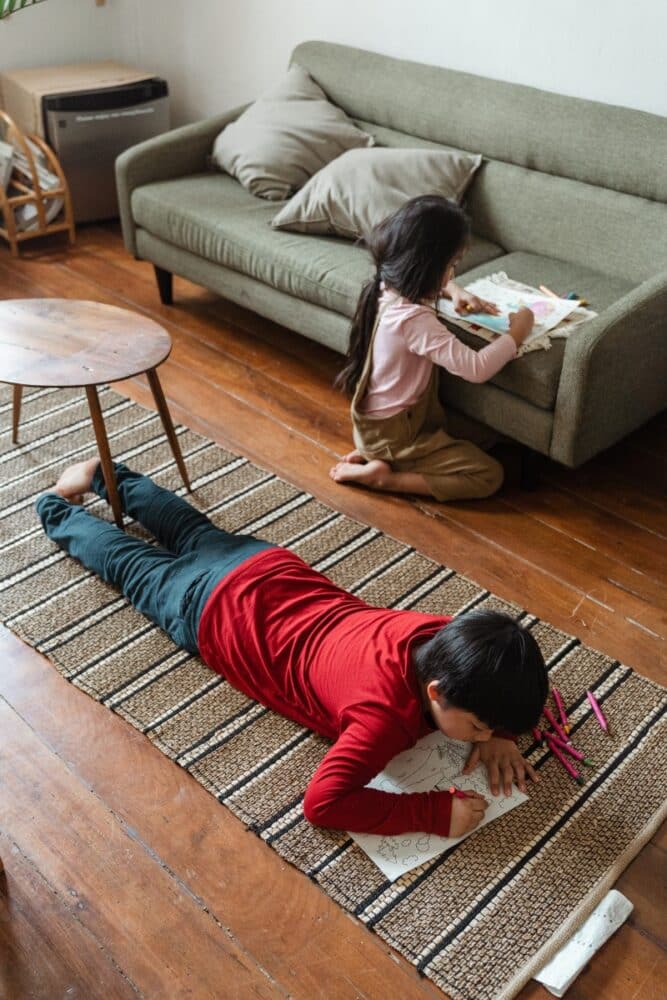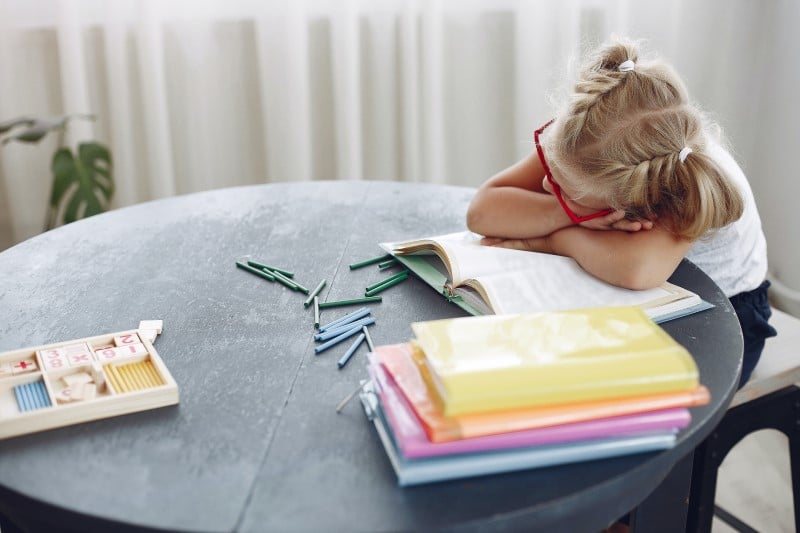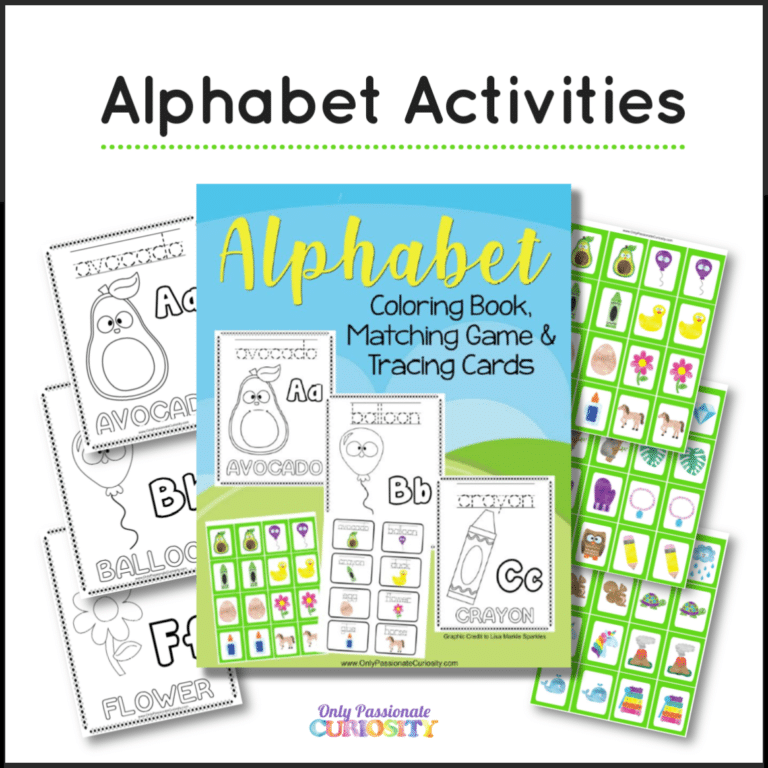9 Tips on Quiet Time Training for a Toddler
I don’t remember who first told me about quiet time training with babies and toddlers … one of my super smart friends.
The idea is this: Even little children can spend time alone, having quiet time.
It doesn’t need to be complicated.

How to Train a Toddler to Have Quiet Time
In our home, quiet time is simple. We don’t have a solid routine or even a specific time for quiet time, but having a routine or a homeschool schedule might work better for your family. (Keep reading for specific tips to institute a quiet time into your household.)
Little Miss does take an afternoon nap most days, but that nap doesn’t count as her quiet time. Of course, you can do this any way you want, and nap time can be a part of quiet time in your house. But for us, for about half an hour each day (typically before lunch), she is expected to play happily and quietly in her room.
She is two, which means I need to be very careful about making sure her space is inviting and safe for independent play. Inside her room, she has special toys that are only played with during quiet time. They are the only toys in her room, and they do not come out. Her brothers don’t get to go in her room at all, so they are only hers.
She’s done the quiet time routine for pretty much forever, so she really doesn’t ever resist, as long as she is well fed, well rested, and her “cup” is full. Quiet time is for happy kiddos. It’s not a punishment or a place to stick a kid who wants attention.
It is a wonderful tool, and it gives me a half-hour chunk of time where I can focus on teaching my older kids math without a toddler interrupting. Having a time like this can protect you from burnout.
I have friends who continue quiet time with older kids, and I really think establishing this routine when they’re young makes a huge difference in kids learning to relax and be happy with independent play later.
Some moms do “blanket time” with older babies and toddlers; basically, you place the child on a blanket with a couple of toys, and they are taught to stay there.

You may need to put the child right back on the blanket if they crawl off a few times, but they learn quickly to stay and play. Little Miss is the same way with her room; sometimes she comes walking out, and I remind her it’s quiet time, and put her right back in her room.
It doesn’t always work perfectly, but the longer we do it, the better she is at playing quietly.
How to Use Quiet Time in Your Home
Teaching your toddler about quiet time can be a valuable skill for both them and you. It helps them learn self-regulation and it gives you time to focus on homeschooling your older children (or on some days, to take a nap yourself!).
Here are some ideas to help you introduce and establish a quiet time for your toddler:

- Choose a Consistent Time: Select a specific time of day for quiet time, ideally when your child is naturally more tired or when you need a break, such as for an hour after lunch. Consistency is key in establishing routines.
- Create a Quiet Space: Designate a specific area in your home as well. It should be a calm and comfortable space with minimal distractions. Use soft cushions, a favorite blanket, a special cuddle toy, or a cozy chair to make it inviting.
- Set Expectations: Explain to your toddler what quiet time means and why it’s important. Use simple language and age-appropriate terms. You can say something like, “This is a time when you can rest and play quietly so I can teach big brother and big sister.”
- Offer Choices: Let your toddler choose a quiet activity they enjoy, like reading books, coloring, doing a simple activity, or playing with quiet toys. This gives them a sense of autonomy and makes this time more appealing.
- Limit Screen Time: Avoid using screens during this time, as they can be overstimulating. Instead, encourage activities that promote relaxation and creativity.
- Use a Timer: Use a timer to help your child understand how long the time will last. Start with a short duration and gradually increase it as they become more accustomed to the routine.
- Positive Reinforcement: Praise and reward your toddler for good behavior. Offer words of encouragement and small incentives to motivate them to cooperate.
- Be Patient and Flexible: Understand that it may take some time for your toddler to adjust to the concept. Be patient and flexible, and don’t be discouraged if they resist initially.
- Stay Calm: If your child resists or becomes disruptive, remain calm and gently remind them of the expectations. Avoid getting frustrated; remember, quiet time is for happy kids.
Remember that every child is unique, and what works for one toddler may not work for another. It’s essential to adapt these tips to your child’s personality and needs. Consistency and patience are key factors in successfully teaching your toddler about quiet time.






